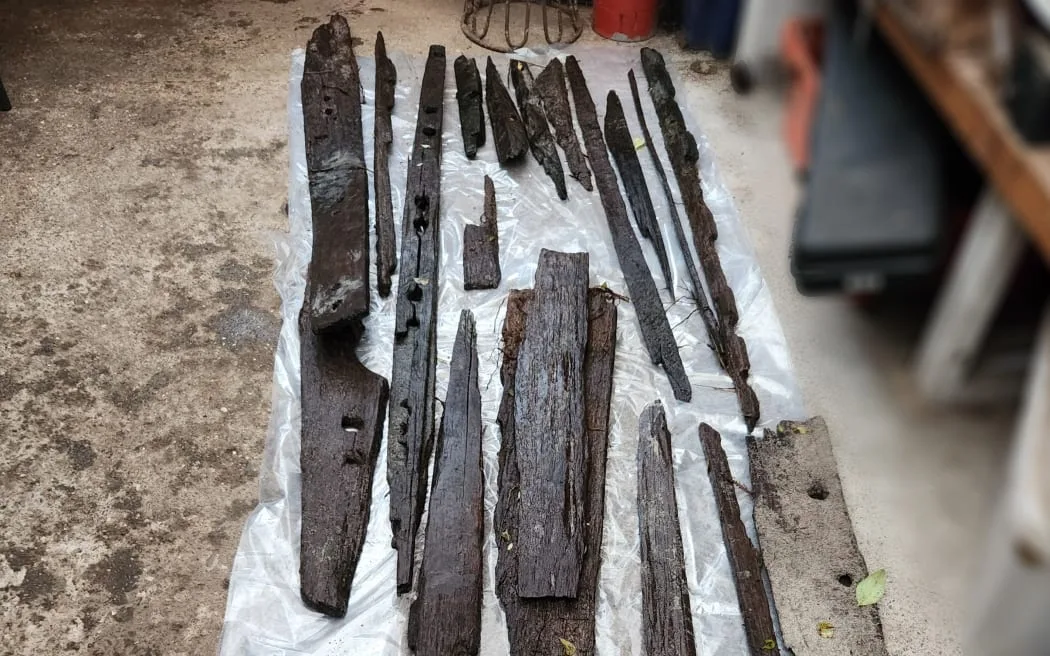Vincent and Nikau Dix’s routine timber search on Rēkohu (Chatham Islands) has culminated in one of New Zealand’s most significant archaeological discoveries. The discovery, which could potentially ramify our understanding of Polynesian history, involved an ocean-going waka, which has captivated both the local community and experts in the field.
A waka is a traditional Polynesian canoe, typically constructed from wood and designed for long ocean voyages. These vessels are suitable for both sailing and paddling. They hold considerable cultural significance in Polynesia. They were historically used for transportation, fishing, and a variety of social and cultural activities, symbolising the intrinsic connection between communities and the sea, as well as their exploratory spirit.
The initial television coverage of the discovery was broadcast by Te Ao With Moana, where reporter Hikurangi Kimiora Jackson and his team interviewed the Dix family at the excavation site. The father and son had originally regarded the “unusual stick” found last August as a mere piece of timber. However, as further sections of the object emerged from the sand, it became evident that they had encountered something extraordinary.
Nikau Dix observed, “This is not ordinary timber; it is exceptionally well made and appeared remarkably preserved. Upon reassembling it at home, we realised it was beginning to take the form of a boat.” Following a significant rainstorm, the Dix family returned to the site and discovered the headpiece of the waka, thereby confirming that the artefact was genuine and not the result of an abandoned project. Since then, the news has stirred considerable excitement among the island’s 650 residents, transforming the excavation into a community-wide phenomenon.
Vincent Dix has noted the transformative impact of the project, highlighting the extraordinary enthusiasm among the local participants. To date, approximately 400 fragments have been recovered, with the potential for further remnants of the waka to be discovered along the coastline. The unveiling of intricate carvings, engraved obsidian, and braided rope suggests that the waka is of considerable antiquity. Preliminary analyses have linked small wood fragments to indigenous Aotearoa trees such as pukatea, tōtara, and rimu.
Archaeologist Justin Maxwell, who is leading the excavation, expressed his astonishment at the find, asserting that no similar waka has been encountered before. He described the discovery as one of the most significant in New Zealand, and potentially in Polynesian archaeology, emphasising that much remains to be uncovered. Maxwell remarked, “There is an abundance of history to be revealed, and we have only just begun to scratch the surface.”
As the excavation continues, conservationists are diligently working to protect and catalogue this precious taonga. Each piece is being carefully washed, treated, and preserved according to its degree of fragility. While scientists propose theories regarding the waka’s origins, local iwi and Moriori maintain their own interpretations. Cultural monitor Tom Lanauze, of Ngāti Mutunga and Moriori descent, suggested that the vessel may be linked to historical accounts of Moriori canoes. He stated, “I believe that it is a Moriori waka that lies there, but as the saying goes, let the waka tell its own story,” alluding to ancient Moriori narratives concerning a vessel known as Rangihoua.
Maui Solomon, a prominent Indigenous rights activist and chairman of the Moriori Imi Settlement Trust, also underscores the importance of this find. With the excavation ongoing, the community remains actively engaged, eager to unearth the history and narratives encapsulated within the waka.
